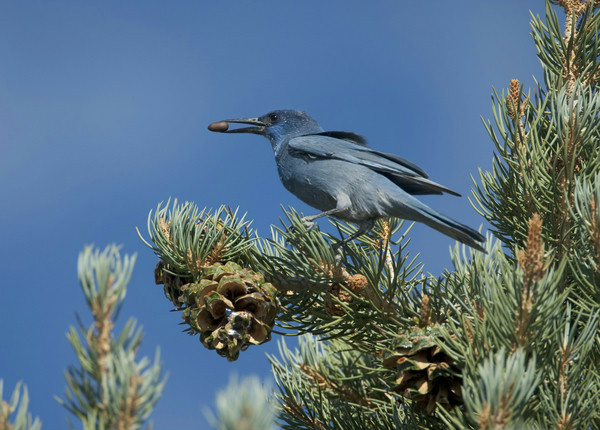
Pinyon Jay Project
Protect and advocate for pinyon jays and their pinyon-juniper habitat
In a specific area
- Ongoing through December 31, 2026 at 7:00 AM
More Information
Pinyon jays — blue birds a little bigger than robins — live in pinyon and juniper forests across the Colorado Plateau. The birds and the trees are mutually dependent on one another: pinyon pines provide pinyon jays with food, and pinyon jays help pinyon pines spread their seeds. Both are facing unprecedented threats.
The pinyon jay population has shrunk by an estimated 85 percent since 1967, and the remaining population is expected to experience further declines in the next 50 years. Researchers believe a major reason for the decline is habitat loss. Across public lands in the West, federal agencies are proposing large-scale destruction of pinyon and juniper forests. After machines chew up the trees, the agencies often plant non-native grasses, which are a favorite of livestock.
We’re looking for volunteers to help gather information about pinyon jays to inform sound management of pinyon and juniper forests in Grand Staircase-Escalante National Monument and elsewhere throughout the Colorado Plateau.
We’re using eBird to document pinyon jay sightings because it is user-friendly and volunteers’ data is easily accessible. Additionally, the Utah Division of Wildlife Resources currently downloads eBird data to inform their bird management strategies. The current Conservation Strategy for the pinyon jay, recommends a 500m buffer of undisturbed habitat around known breeding colonies, providing protection for both birds and the pinyon-juniper forests. Thus, if we can document where there are pinyon jays and perhaps even breeding colonies, we can advocate and hopefully prevent large-scale clear-cutting and discourage tree removal altogether in areas full of pinyon jays.
Ticket Required: No
Minimum Age: 13
Languages: English
